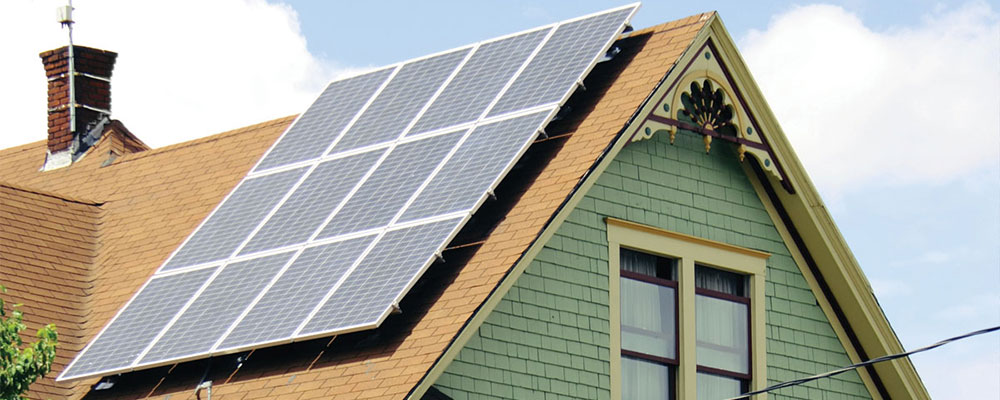Choosing a Solar PV System

When considering whether to install a solar PV system, it’s important to remember that these systems only generate electricity when the sun is shining.
Even during the daytime, a solar PV system may not generate enough electricity to satisfy all of a home’s power needs. Solar PV customers must therefore have another source of energy on which to draw.
Types of Solar PV Energy Systems
Grid-Connected PV
In this most common type of PV system, the solar panel array is connected to JEA’s electric grid. During the day, when a solar PV system produces more electricity than the home needs, the excess energy is delivered to JEA’ grid and the customer is reimbursed for this energy at the fuel rate. At any moment, if the solar panels don’t produce enough electricity, the grid instantly provides the home with electricity purchased from JEA to maintain adequate power. Should the JEA grid be unavailable due to storms or other service interruptions, a grid-connected solar PV system is designed to shut down in order to prevent damage to the home's appliances.
Grid-Connected PV with Battery
When a battery storage system is added to a grid-connected solar PV installation, the battery stores the solar array’s excess energy instead of sending it to JEA’s grid. The home can then draw on this stored energy when the PV system isn’t generating
enough power to meet the home’s needs. As with a non-battery solar PV system, JEA’s grid provides electricity when the solar panels and the battery do not generate enough power to meet the home’s needs. Battery storage systems can be sized to store
sufficient energy to provide for a few hours of operation of household electric equipment. Some battery systems may also be configured to supply power to a select number of critical appliances during a power outage.
Off-Grid or Stand-Alone with Battery and Generator
Most commonly found in remote areas where connecting to a utility grid is not an option, this type of solar PV system relies on a battery storage system to provide most of the home’s power, with hydrocarbon fuel generators and other energy sources use
as a backup when the energy stored in the battery isn’t enough to satisfy the home’s power needs during extended periods of time.
Related Links
-
Solar PV Buyer Checklist
If you have decided to have a solar PV system installed at your home, below are the steps JEA recommends you follow to make sure you come out on top.
-
Distributed Generation
JEA’s Distributed Generation Policy reflects the changing energy landscape and growing popularity of solar energy.